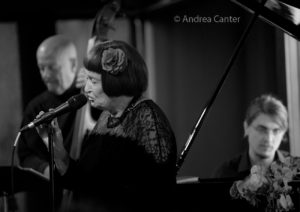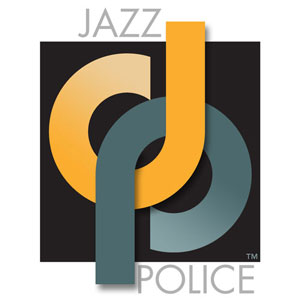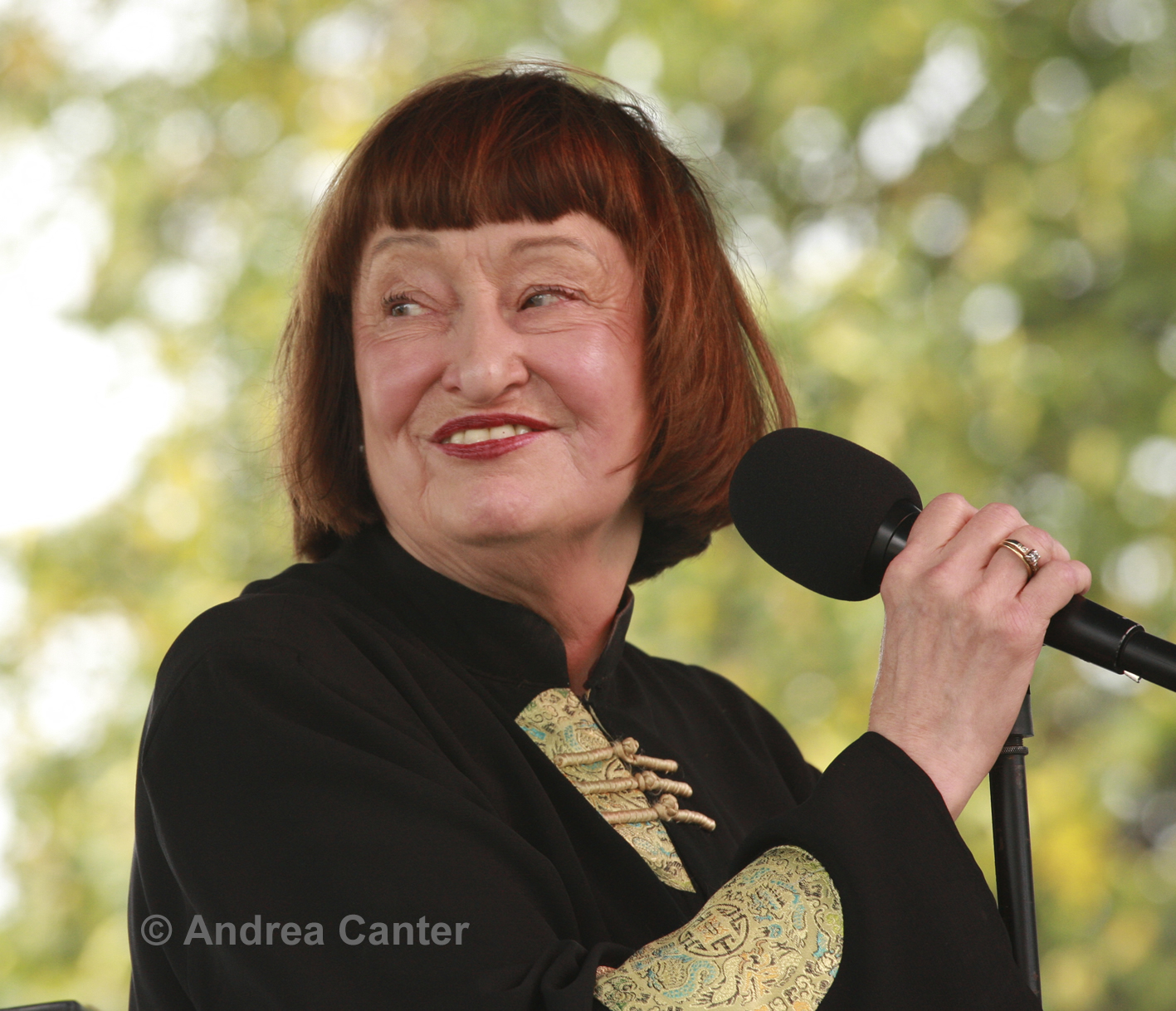
Jordan has “absorbed bebop from the source, but she’s also a committed modernist whose style has evolved with the ensuing decades.” – The New Yorker
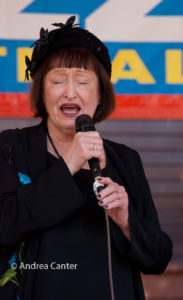
“She was revered in the jazz world as a chance taker who communicated an effervescent joy in the pure act of singing.” –Barry Singer, New York Times
Charlie Parker often introduced jazz pioneer Sheila Jordan as “the singer with the million dollar ears.” She never had the fame of Sarah or Ella, but she may have had at least as much influence on the trajectory of vocal jazz as dedicated teacher as well as exhilarating performer. Her debut album Portrait of Sheila was released in 1963 on Blue Note—the label that by policy never had previously released a vocal album. Named an NEA Jazz Master In 2012 at age 84, she was indeed a jazz master in every sense of the word—an innovator, educator, and entertaining performer, particularly in duo with some of the world’s top bassists.
Sheila Jordan passed away on August 11 at age 96. I was fortunate to see and hear Sheila several times in both her performer and educator contexts. What follows are my reviews of a master class and duo performance from the 2012 Healdsburg Jazz Festival, originally published on Jazz Police (June 2012).
Sheila Jordan Master Class (June 9, 2012)
“If it wasn’t for jazz music, I wouldn’t be alive today,” sang Sheila Jordan. Known for her scat and vocalese as well as original approach to interpreting songs, the 83-year-old vocal jazz icon started off her Master Class in the Healdsburg High School band room with “Sheila’s Blues in F”—her own biography set (spontaneously, it seemed) to a Charlie Parker blues form, backed by piano and bass. The festival brochure noted that Sheila believes in “teaching from the heart, offering encouragement to build confidence.” I am not a singer myself–I was registered as an “observer.” But I know teaching from the heart when I see and hear it, and this was the real thing. The workshop drew a diverse group of 17, including four observers and 13 singers of all ages (including two high schoolers) and levels of experience.
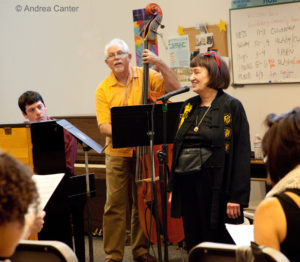
After her opening remarks regarding general recommendations for jazz vocalists (e.g., “Don’t expect to make a lot of money;” “don’t imitate other singers;” “know how to count out time;” “learn the original melody first”) and a brief discussion of the three “essentials” (“ears” –listening, “heart” –emotion, and “feet” –rhythm), Sheila encouraged her singing pupils to put their own biographies into spontaneous song, backed by bass and piano. Each singer then performed a tune prepared for the workshop. For Sheila, a critique is a discussion of enhancements, an opportunity to motivate rather than criticize. Reacting positively to each singer, she offered suggestions—move the key up (or down) a step, try a different ending, find a way to signal the band that the you want to go out of time, go back and listen to the original recording of the song. Extending the class an extra thirty minutes, Sheila distributed charts for “Barbados” (Charlie Parker) and “Song for My Father (Horace Silver). “Listen first to how Charlie Parker altered the chords,” Sheila told the group as she and the band did a straight run at “Barbados” before launching into the improv as Parker recorded it. After three and a half hours, everyone left a little tired, laughing, smiling, supported by one of the greatest jazz vocalists in the history of the music. And more than eager to hear her duo set with bassist Cameron Brown the following afternoon.
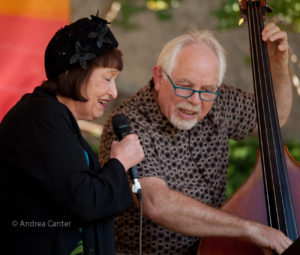
Sheila Jordan and Cameron Brown (June 10, 2012)
After observing the master class the day before, my expectations for Sheila’s duo with Brown were quite high. Still, I don’t think I was fully prepared for the impact of her singular approach to song and storytelling and the intensity of the voice/bass collaboration. As she did with her class, Sheila introduced herself to the Rodney Strong audience with an improvised bebop bio blues and a run through “Willow Weep for Me.” I remember our music class singing this old chestnut in 7th grade. Could this be the same song? In duo with fellow improviser Cameron Brown, Sheila alone carried the melody throughout her 70-minute set, a significant feat for a singer at any age, but her phrasing is her true hallmark and her lineage goes straight back to Charlie Parker while not simply suggesting hornlines. Her medley of Astaire/Rogers dance-themed songs (“Let’s Face the Music and Dance,” “Cheek to Cheek,” “I Won’t Dance,” “I Could Have Danced All Night”) suggested dance merely in the way she turned a phrase, and her interaction with Brown was as perfectly in sync as a two-step between Fred and Ginger. Throughout the set, their musical give and take flowed like the intimate conversation of long-time partners; Brown is surely one of the most sympathetic and inventive bassists around, his musical stories as engaging as Jordan’s, without words. Other highlights—Sheila’s invented lyrics paying homage to late musicians; a medley saluting Billie Holiday (more invented verses re Lady Day and Prez); a recitation of the words of Martin Luther King speaking at the 1964 Berlin Jazz Festival (“jazz puts the hardest realities of life into music”) as an intro to Kenny Dorham’s “Fair Weather”; melding “Blue Skies” with “All Blues”; saluting (or scolding?) the chirping birds flitting above the stage; another scion of Haynes, Craig sitting in on congas. I don’t know how Sheila sounded in her early years. But she remains the consummate jazz singer in her 80s. And did I mention that she is outrageously funny?
RIP, Sheila.
